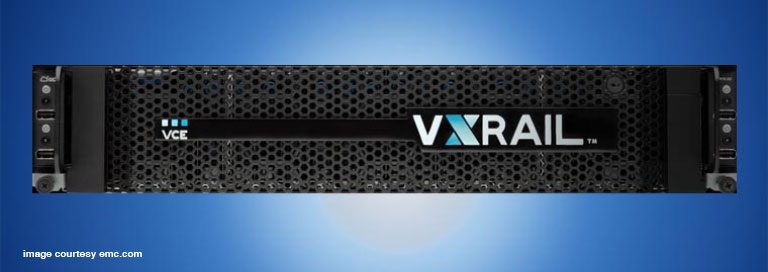Imagine needing a car for your business and having to assemble the various parts. You would have to purchase the chassis, engine, brakes, etc. — possibly from different vendors — and ensure that those components are compatible. Then you’d have to go through the arduous process of putting the pieces together and testing the finished vehicle.
Sound ridiculous? Well, that’s essentially how IT systems traditionally have been implemented. Organizations purchase servers, storage capacity, networking gear and software, then integrate those discrete components into a functioning data center. The process is slow, difficult and expensive for large enterprises with in-house IT staff. It’s even more challenging for small to midsize businesses (SMBs) with limited budgets, resources and skill sets.
Hyper-converged infrastructure solutions can help relieve this pain. In essence, hyper-convergence provides a “data center in a box” with tightly integrated compute, storage, networking and other resources. The system is preconfigured and pretested with “one throat to choke” vendor support. Best of all, hyper-converged infrastructure solutions simplify deployment, reduce complexity and accelerate the time-to-value of the technology investment.
What makes them “hyper” converged? Converged infrastructure solutions combine all the core data center components but don’t integrate them as tightly — you could separate the parts and use them in the conventional way. As a result, converged infrastructure solutions typically have rigid configuration requirements that limit flexibility and expansion.
Hyper-converged infrastructure solutions cannot be separated into their component parts. They are software-defined, meaning that each function runs as a service controlled by software. In essence, hyper-convergence builds upon the same principles as the virtualized servers you may be running in your environment. All resources are pooled for greater resilience and efficiency, and you can scale out capacity by adding modules. This enables IT staff to roll out new applications and services more quickly to meet changing business demands.
Interestingly, storage is a primary use case for hyper-convergence. It all goes back to resource pooling — storage capacity can be combined into logical volumes irrespective of the physical storage device. Some hyper-converged solutions feature integrated local backup and replication tools, further simplifying the environment. They can also be combined with cloud-based storage and backup for even greater scalability and data protection.
The market for hyper-converged infrastructure solutions is relatively new but it’s growing at a phenomenal rate. According to a May 2016 report by ActualTech Media, more than 46 percent of midsize and enterprise organizations have adopted hyper-convergence in some form. A separate study by Techaisle found that 10 percent of small and 27 percent of midmarket companies plan to adopt this technology, and the research firm expects those numbers to increase rapidly as more SMBs become familiar with hyper-convergence.
A number of vendors have jumped on the hyper-convergence bandwagon, so you need to do your research before making an investment. At Verteks, we believe Dell EMC’s VxRail appliance offers a strong mix of features and value. Jointly engineered by EMC and VMware, VxRail combines industry-leading virtualization software, data services and management tools in all-flash and hybrid storage configurations and single- and dual-processor models.
If building a data center from scratch sounds daunting, you should be investigating hyper-converged infrastructure. Verteks can help you leverage VxRail to create an IT environment that’s simpler, more flexible and more efficient.




